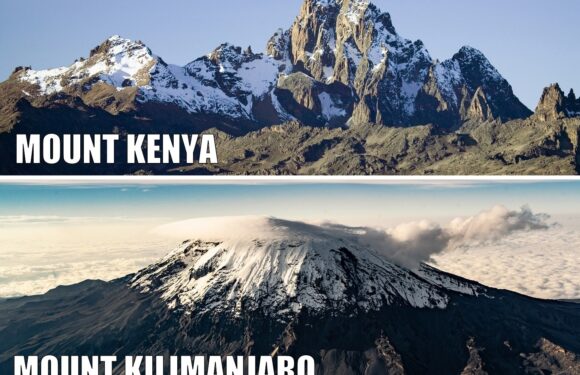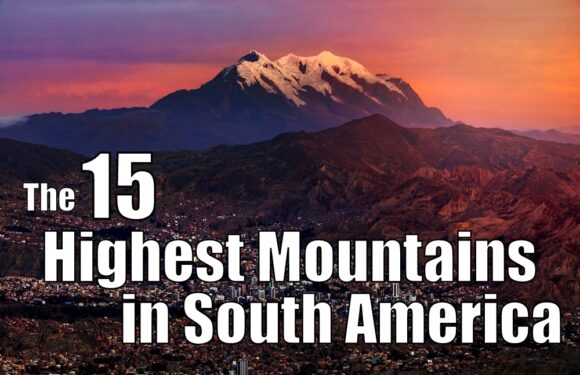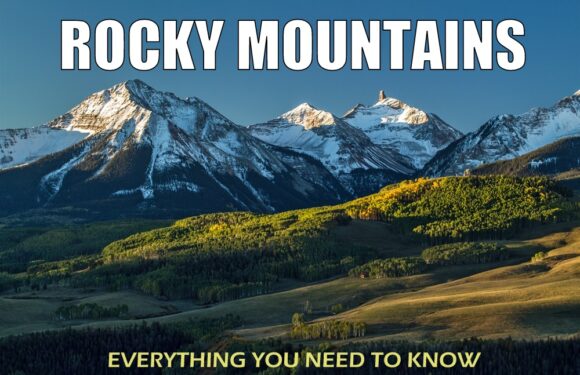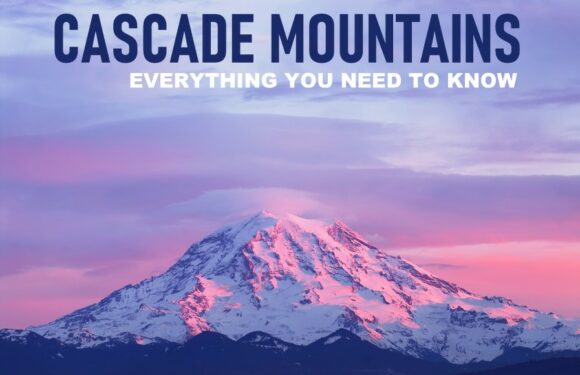
Europe is a continent known for its rich cultural heritage and natural beauty. Among these are formidable mountains that adorn the European landscape. From the snow-capped peaks of the Alps to the rugged beauty of the Caucasus, Europe is home to a range of high peaks.
What are Tallest Mountains in Europe?
Here are the 15 tallest mountains in Europe:
1. Mount Elbrus, Russia (5,642 meters/18,510 feet)
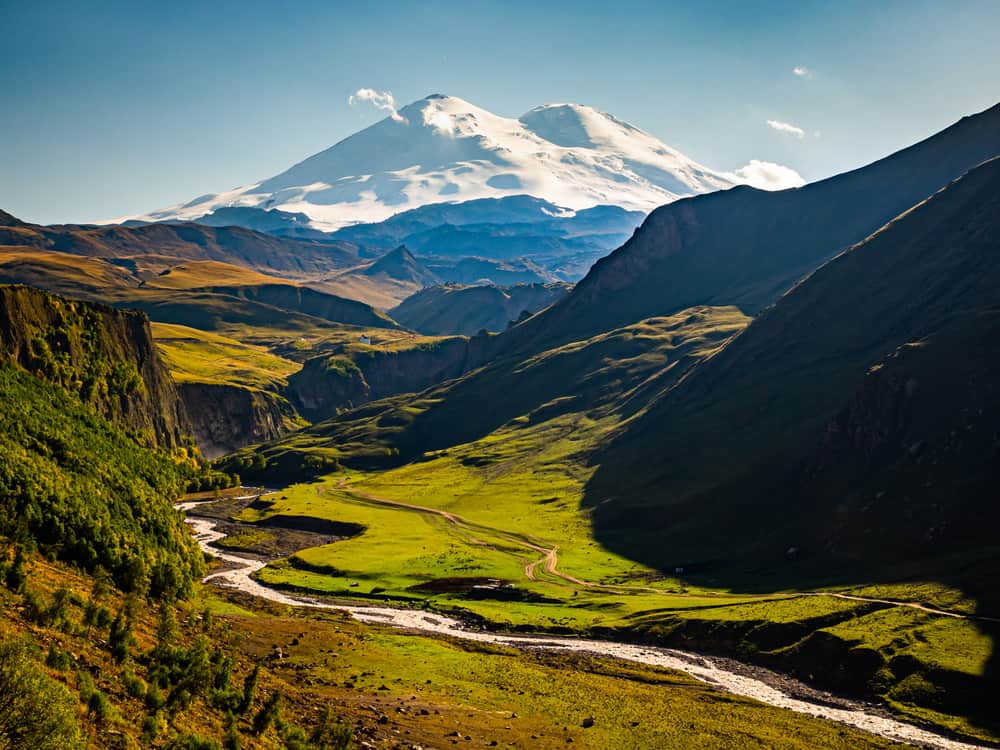
The highest mountain in Europe is Mount Elbrus in Russia. The term “Elbrus” is thought to have origins in the Turkic and Persian languages, meaning “eternally snowy.”
This dormant volcano is one of the Seven Summits, the highest mountains on each of the seven continents. Elbrus has two main summits, both covered in snow and ice, giving it an imposing and ethereal appearance. Despite its elevation, Elbrus is a relatively accessible peak for climbers, with the option of utilizing chairlifts to reach higher altitudes.
Elbrus is part of the Caucasus Mountains, which form part of the boundary between Europe and Asia. The mountain range has a length of approximately 750 miles/1,200 km and stretches between the Caspian Sea and the Black Sea. Ten of the tallest peaks in Europe are located in the Caucasus Mountains.
2. Dykh-Tau, Russia (15,205 meters/17,077 feet)
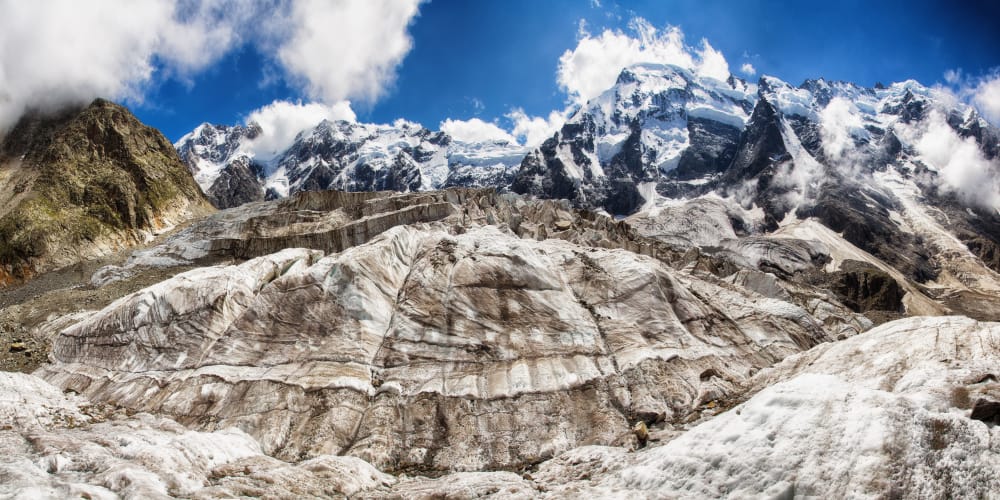
Also located in the Caucasus range, Dykh-Tau is the second highest peak in Europe. The name translates to “Blizzard Mountain,” and it lives up to its name with its challenging weather conditions.
Dykh-Tau’s rugged beauty stands as a testament to the power of nature. This peak is one of the hardest to climb in the Caucasus. All of its faces are incredibly steep and full of snow and Ice.
3. Shkhara, Georgia (5,193 meters/17,037 feet)
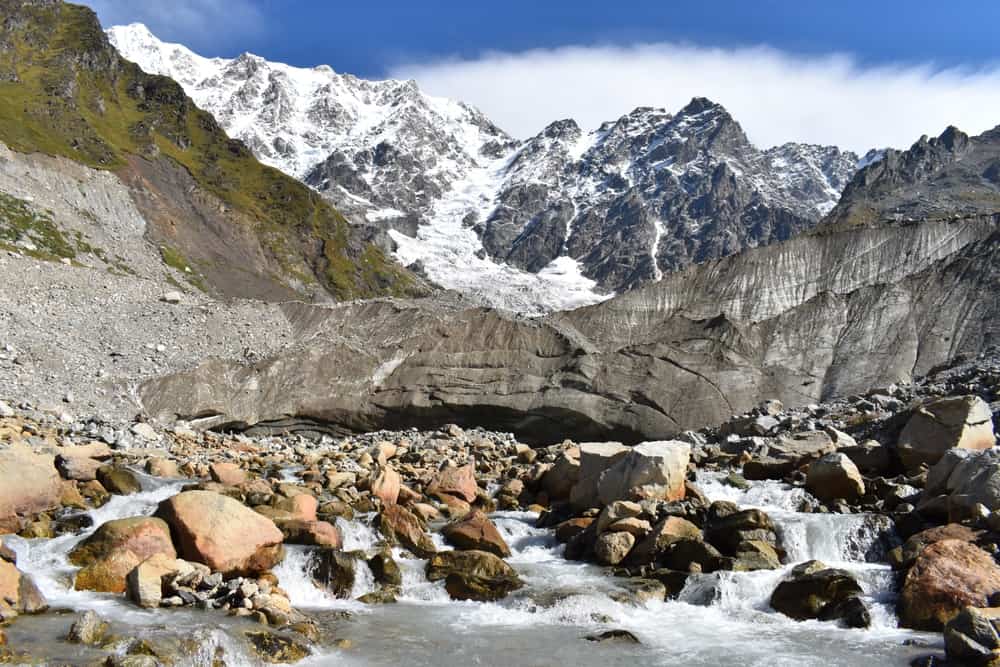
Shkhara, the highest point in Georgia, is a majestic peak nestled within the Caucasus Range.
The Svan people, an ethnic group native to the highlands of western Georgia, have inhabited the area around Shkhara for centuries. Shkhara translates to “treasure” in the Svan language, reflecting the reverence that the mountain inspires. In Svan mythology, Shkhara is often associated with powerful deities and guardian spirits that protect the land and its people.
Shkhara is surrounded by glaciers, adding to its allure and creating an environment of otherworldly beauty. The glaciers also play a crucial role in maintaining the region’s ecosystem and water supply.
4. Mount Kazbek, Georgia (5,047 meters/16,558 feet)
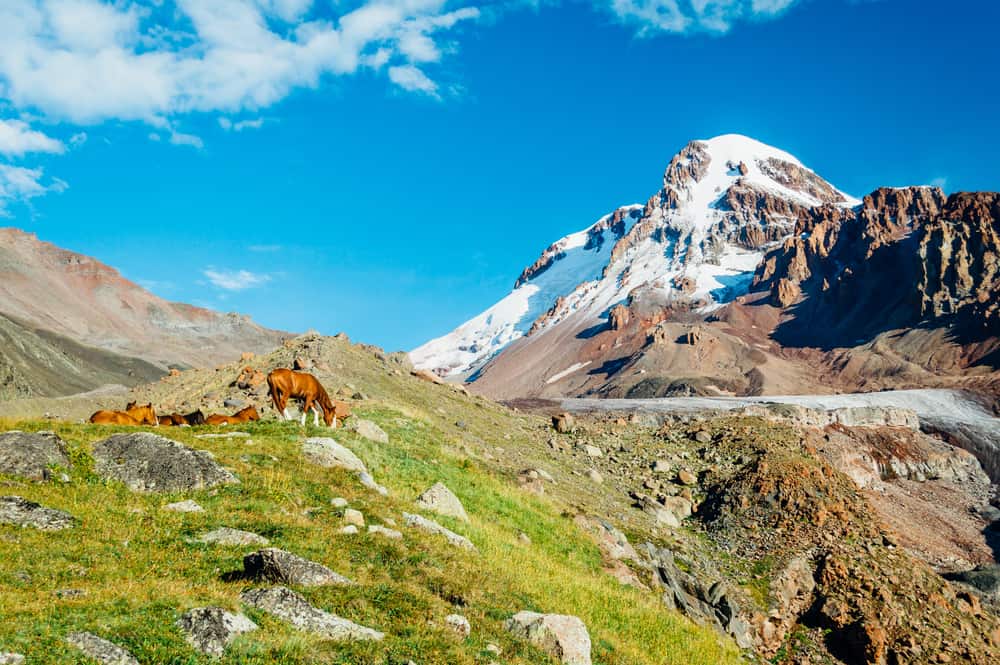
Next on our list is Mount Kazbek, a stratovolcano steeped in myth and history. According to Georgian legend, it was on the slopes of Kazbek that the Titan Prometheus was chained as punishment for stealing fire from the gods. The mountain’s impressive elevation and conical shape make it an impressive sight in the Caucasus.
Mount Kazbek is not only a destination for climbers but also a place of pilgrimage. The Holy Trinity Church, perched on the mountain’s lower slopes, serves as a testament to its cultural and spiritual significance.
5. Mont Blanc, France/Italy (4,808 meters/15,774 feet)
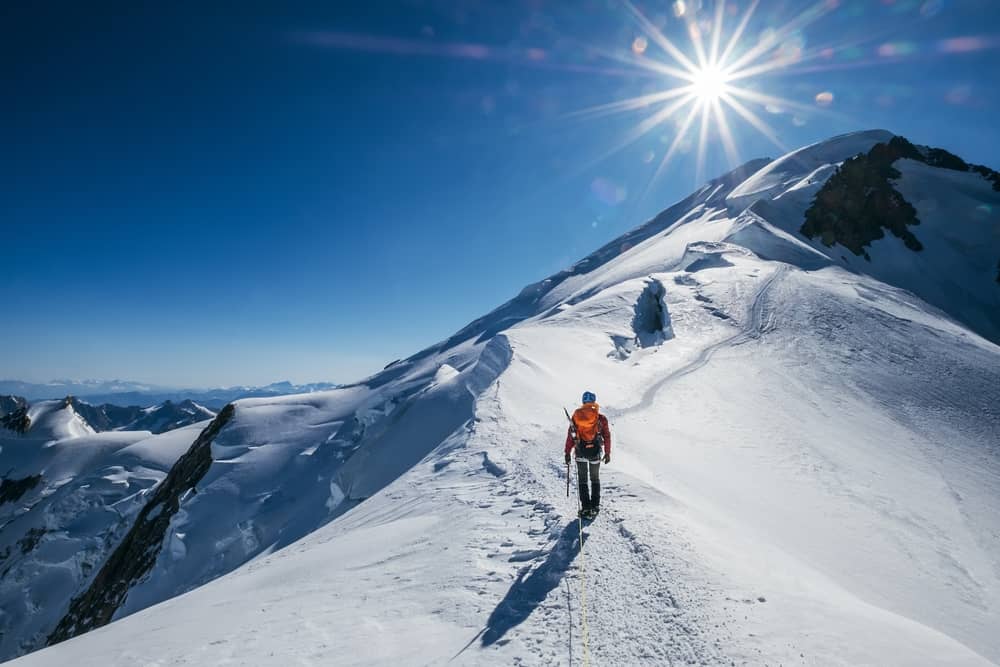
Mont Blanc, meaning “White Mountain,” is the second tallest mountain in Europe.
It is the highest peak in the Alps, the longest mountain range that is located entirely in Europe. The range has a length of approximately 750 miles/1,200 km and stretches across eight countries (France, Switzerland, Monaco, Italy, Liechtenstein, Austria, Germany, and Slovenia).
Straddling the French-Italian border, Mont Blanc is a popular destination for mountaineers. Reaching its summit offers expansive views of the Alps.
6. Dufourspitze, Switzerland/Italy (4,634 meters/15,203 feet)
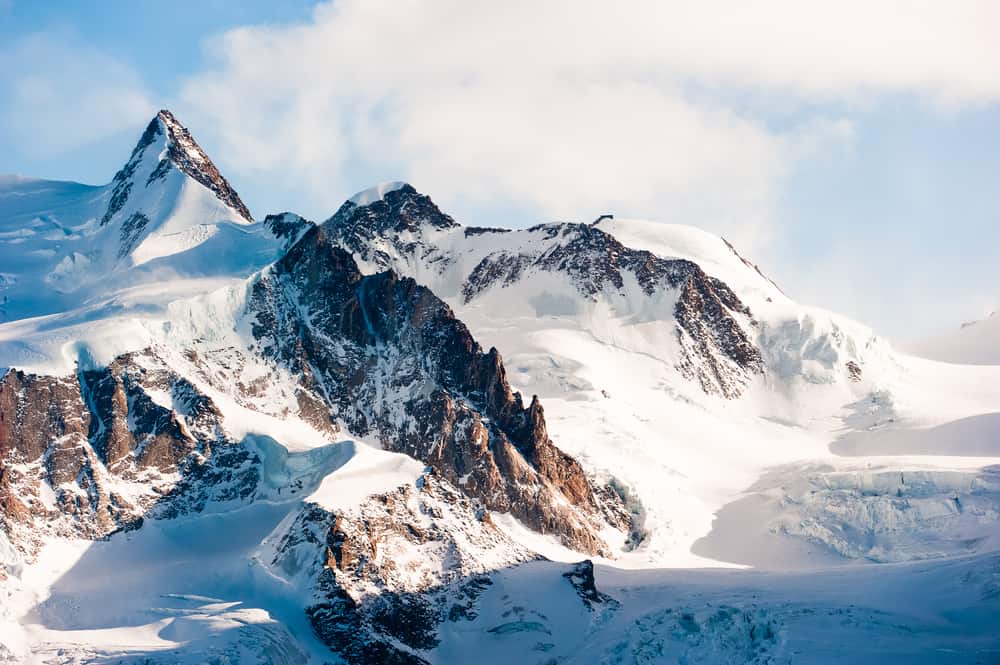
Dufourspitze holds the distinction of being Switzerland’s highest peak. The mountain is situated in the Pennine Alps and is the second tallest in the Alps.
Originally named Gornerhorn, the peak was renamed in 1863 after General Guillaume-Henri Dufour, a Swiss general and topographer. The mountain is part of the Monte Rosa Massif, which straddles the border between Switzerland and Italy and includes several other notable summits.
The Monte Rosa massif is home to one of the largest glacial systems in the Alps, making it a hub for glaciological research.
7. Zumsteinspitze, Switzerland/Italy (4,563 meters/14,970 feet)
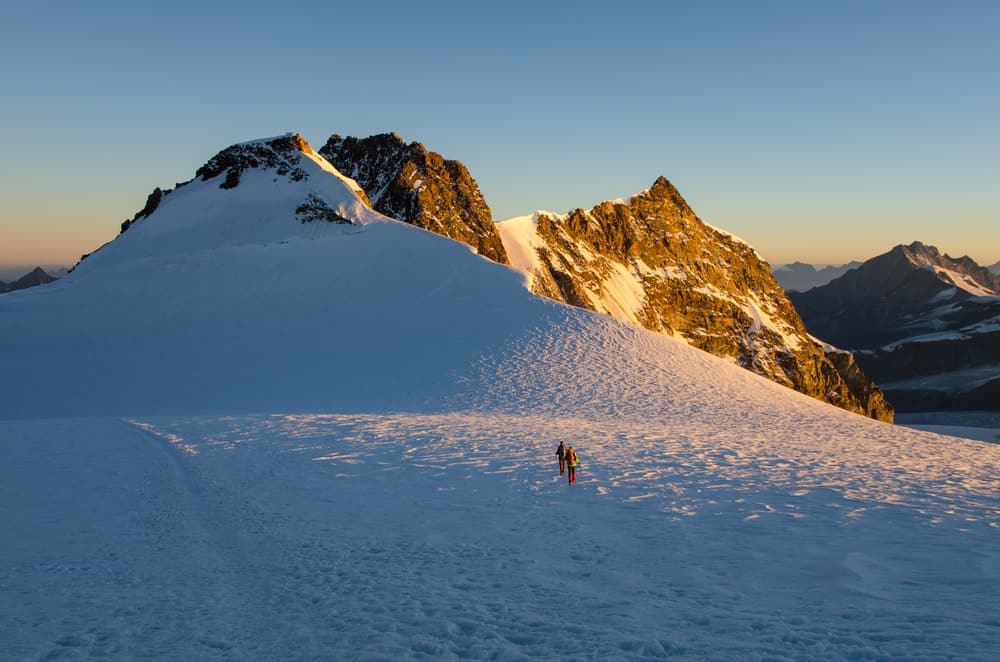
Zumsteinspitze is situated within the Monte Rosa massif, which spans the border between Switzerland and Italy. This massif is home to a collection of impressive peaks, glaciers, and valleys.
While not as famous as some of its neighbors, Zumsteinspitze is a favorite among experienced climbers seeking a challenging ascent. Its unique position offers views of the surrounding mountains and glaciers. Glaciers play a central role in the majesty of the Monte Rosa Massif. Vast ice fields and flowing glaciers weave between the peaks, creating a surreal landscape of blue and white.
8. Signalkuppe, Switzerland/Italy (4,554 meters/14,941 feet)
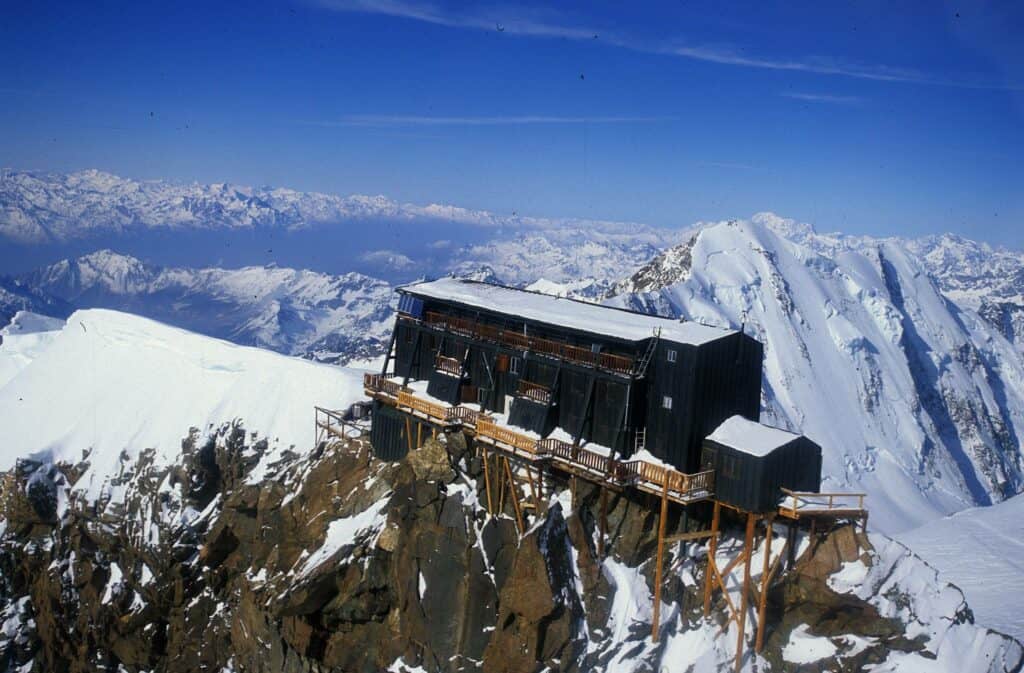
Signalkuppe, also known as Punta Gnifetti, is home to the Margherita Hut, which is one of the highest mountain huts in the Alps.
Punta Gnifetti and the Margherita Hut hold historical significance within the world of mountaineering. The hut was constructed in the late 19th century and was a remarkable engineering feat of its time. Today, the hut continues to serve as a base for climbers and trekkers, offering a respite and a place to appreciate the beauty of the Alps.
The Margherita Hut is named after Italy’s Queen Margherita, who was a patron of the Italian Alpine Club. It stands as a tribute to her contributions to mountain exploration and preservation. The hut also is a base for scientific research.
9. Dom, Switzerland (4,545 meters/14,911 feet)

Dom reigns as one of Switzerland’s most cherished summits. Its pristine white slopes and imposing presence earned it the title of “crown jewel” of Switzerland’s mountain landscape.
The first recorded ascent of the Dom took place in 1858 by British mountaineer Leslie Stephen and Swiss guide Johann Zumtaugwald. This marked the beginning of mountaineering in the region and paved the way for subsequent explorations of the Swiss Alps. The Dom’s ascent was a pioneering achievement, reflecting the evolving techniques and equipment of the time.
10. Lyskamm, Switzerland/Italy (4,533 meters/14,862 feet)
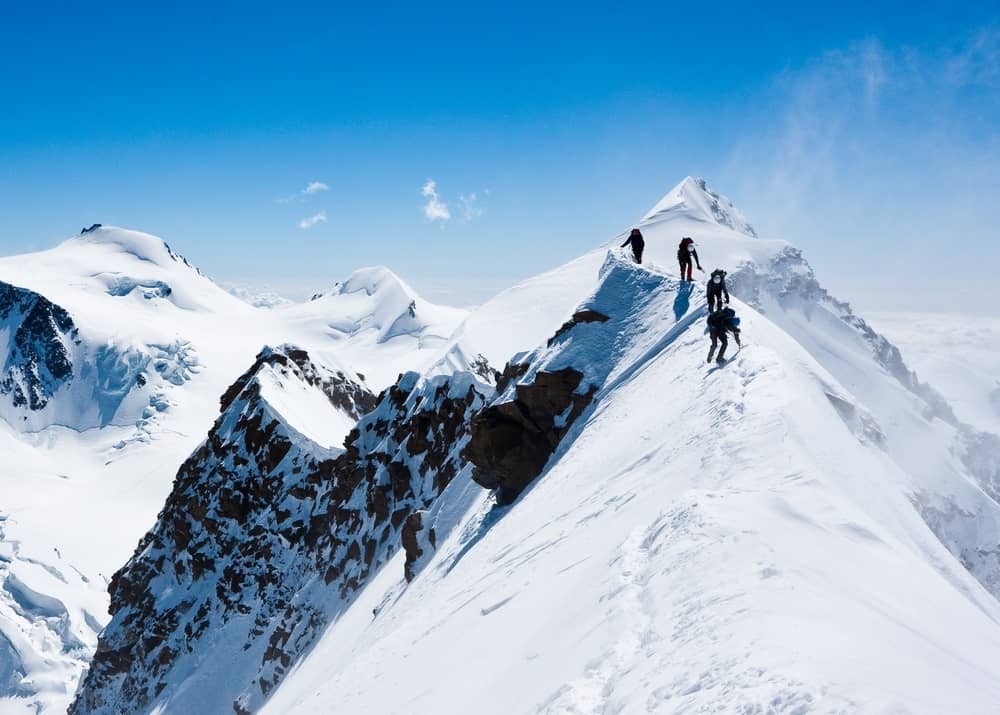
Lyskamm is part of the Pennine Alps. The name “Lyskamm” translates to “Light Ridge,” an ironic name considering the mountain’s demanding nature.
It features two main summits, the Eastern Summit (14,852 feet) and the Western Summit (14,862). The Eastern Summit is slightly higher and is often considered the main peak. However, the Western Summit, despite its lower elevation, presents a more challenging ascent due to its exposed and technical routes.
Straddling the Swiss-Italian border, this mountain presents a challenging ridge traverse that requires technical mountaineering skills.
11. Weisshorn, Switzerland (4,506 meters/14,783 feet)
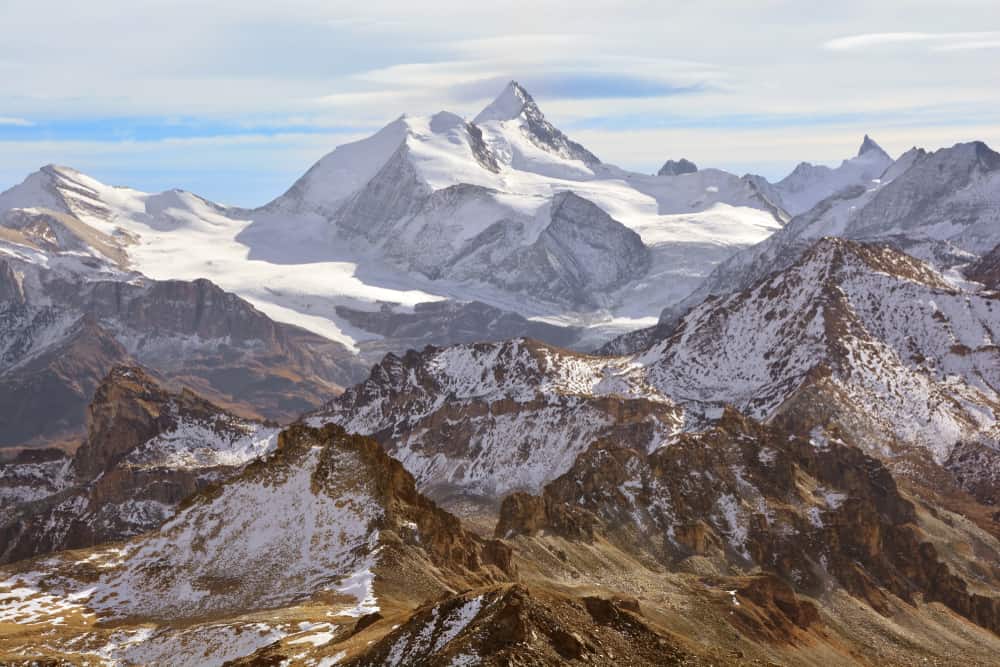
With its distinctive pyramid-like shape and impressive height, the Weisshorn has earned a reputation as one of the most beautiful mountains in the Alps.
Its four distinct ridges create the illusion of a perfect pyramid when viewed from certain angles. This unique shape has earned it the moniker “Matterhorn of the Valais.” The mountain’s symmetry and grandeur have made it a favorite subject for photographers, artists, and explorers.
The Weisshorn’s first ascent in 1861 by British mountaineers John Tyndall, Johann Joseph Bennen, and Ulrich Wenger marked a significant milestone in alpine exploration. It marked the culmination of mountaineering techniques and equipment of the time.
12. Täschhorn, Switzerland (4,491 meters/14,734 feet)
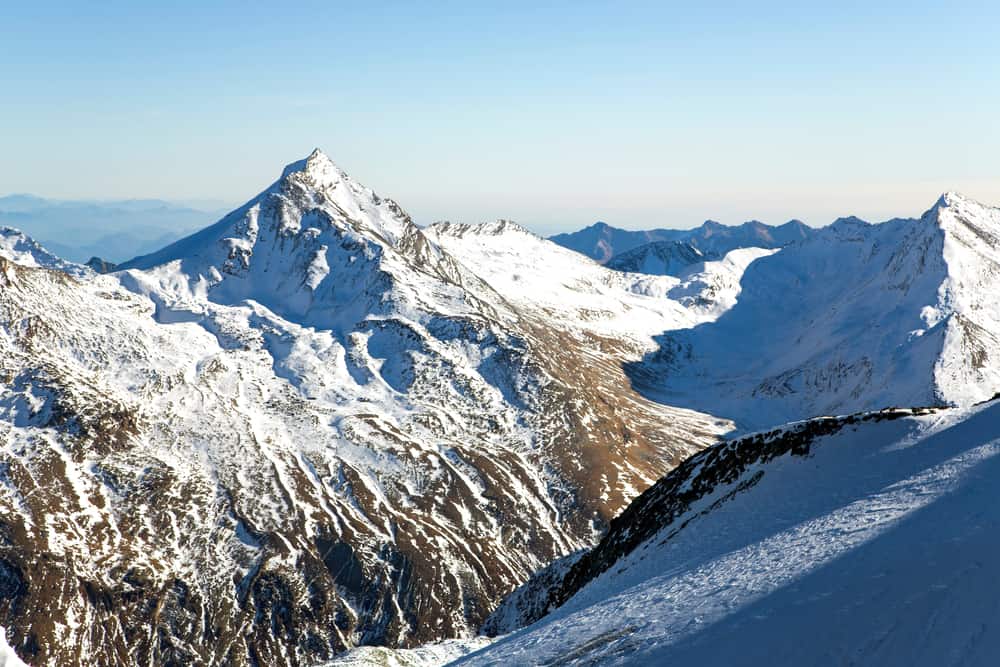
Täschhorn’s towering silhouette embodies the spirit of Alpine adventure. The name is derived from the word “Täsch,” meaning pocket or bag, possibly referencing the mountain’s shape.
The Swiss Alps have a rich history of mountaineering and exploration, and Täschhorn has played a role in shaping this legacy. It is known for its impressive rock walls, challenging climbing routes, and captivating views. Täschhorn’s reputation has grown through the ages, attracting climbers who seek to conquer its lofty heights.
13. Matterhorn, Alps, Switzerland/Italy (4,478 meters/14,692 feet)
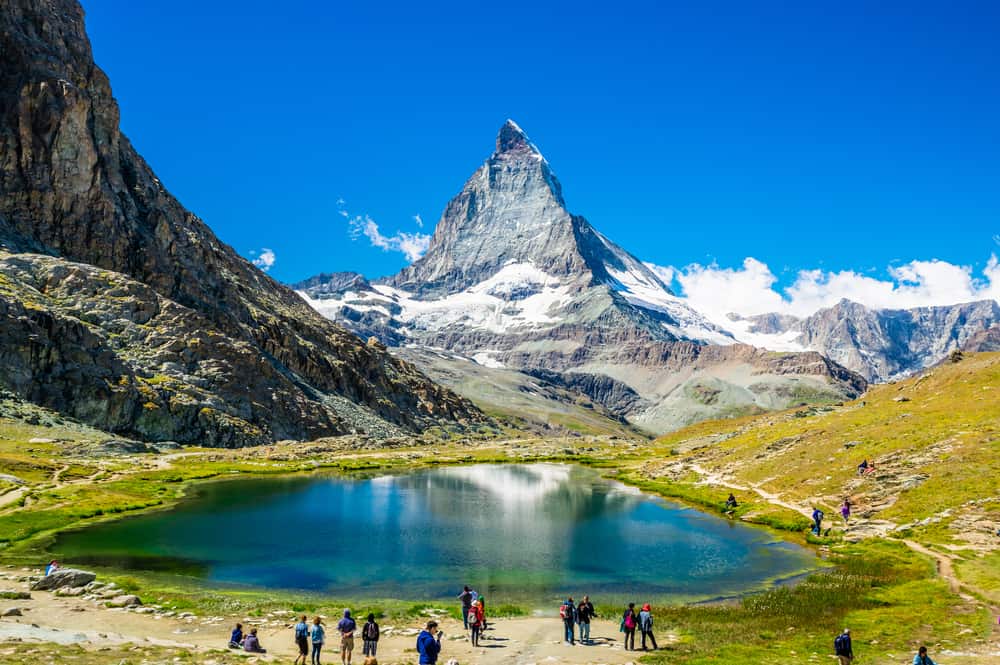
The Matterhorn, with its unmistakable pyramid shape and storied history, stands as one of the most recognizable and celebrated mountains in the world. Rising dramatically above the Swiss and Italian Alps, the Matterhorn is a symbol of mountaineering and adventure.
The first ascent of the Matterhorn in 1865 marked a pivotal moment in mountaineering. British climber Edward Whymper, along with a team of climbers and local guides, achieved the summit after multiple attempts. Tragically, four members of the team lost their lives on the descent, leaving an indelible mark on the mountain’s history.
The Matterhorn’s prominence in popular culture extends beyond the climbing world, as it has appeared in various films, literature, and artwork.
14. Finsteraarhorn, Switzerland (4,274 meters/14,022 feet)
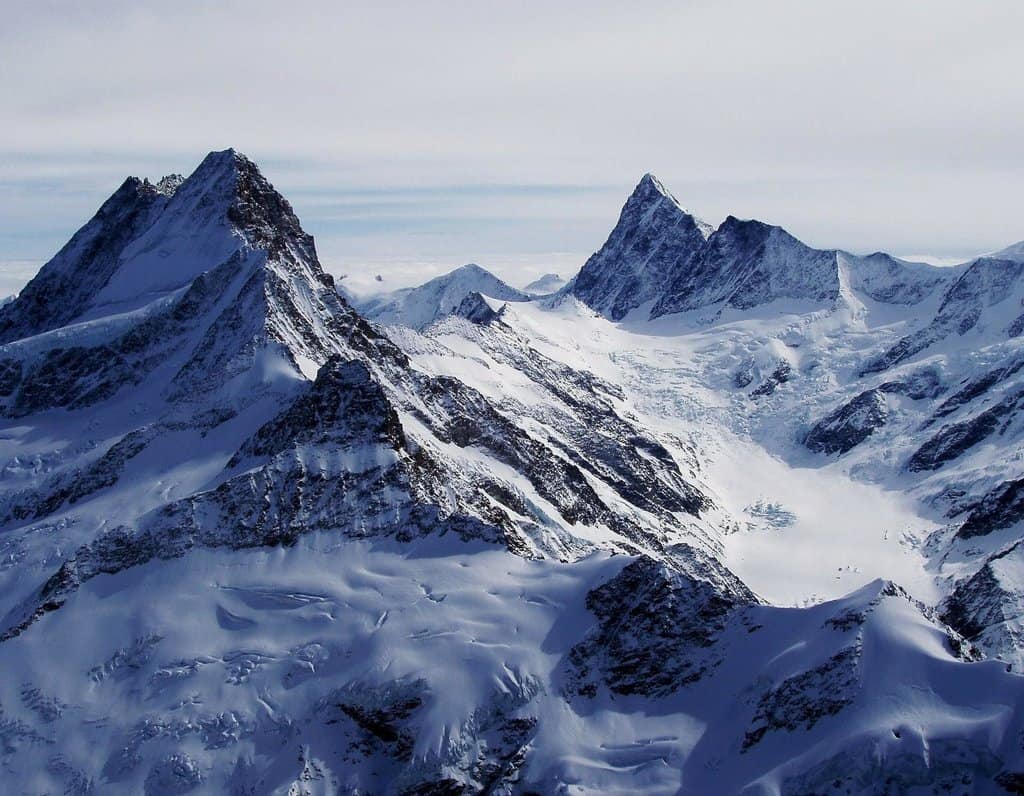
The Finsteraarhorn is the highest peak of the canton Bernese Oberland and the third most prominent peak in the Alps. Its name translates to “mountain of darkness” in German, likely referring to the shadow cast by the mountain on its surrounding valleys.
Located in the Bernese Alps, the mountain is a relatively remote and less frequented destination compared to some of its more famous neighbors. It was first ascended in 1812 by Swiss guides Joseph Bortis and Johann Niklaus Vincent, along with two British climbers.
15. Grandes Jorasses, France/Italy (4,208 meters/13,806 feet)
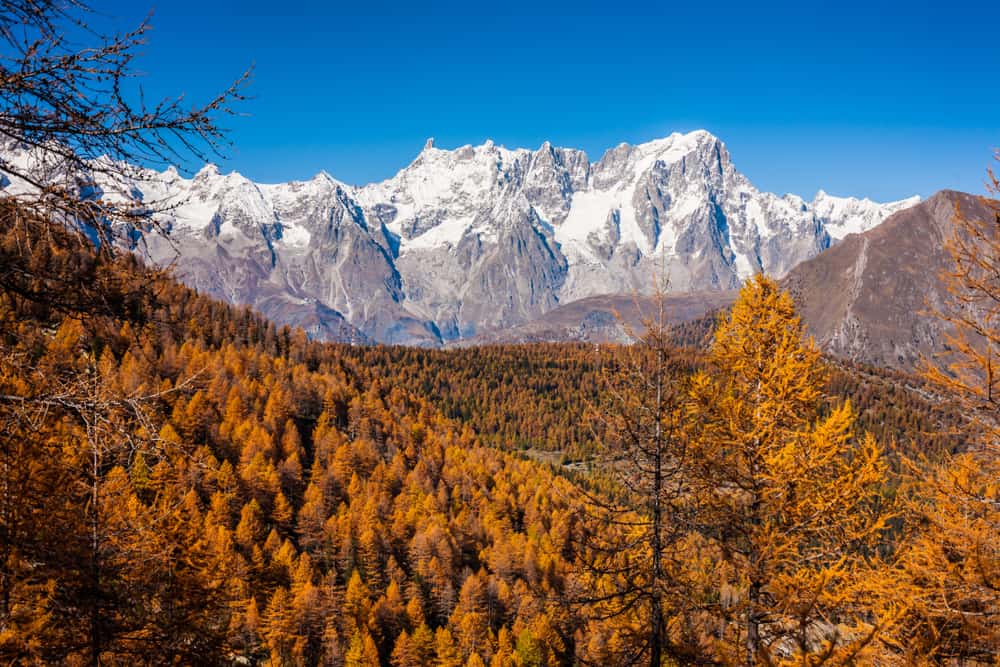
Closing our journey through Europe’s highest mountains is the Grandes Jorasses, a series of peaks that form an imposing barrier between France and Italy.
The Grandes Jorasses consist of several distinct summits, each contributing to the massif’s unique character. The tallest peak is Pointe Walker, named after the British climber Horace Walker who was part of the first ascent team in 1868. Other notable summits include Pointe Whymper, Pointe Croz, and Pointe Elena. Together, they form a breathtaking ensemble of jagged spires and glaciers.
How Does Mount Kilimanjaro Compare?
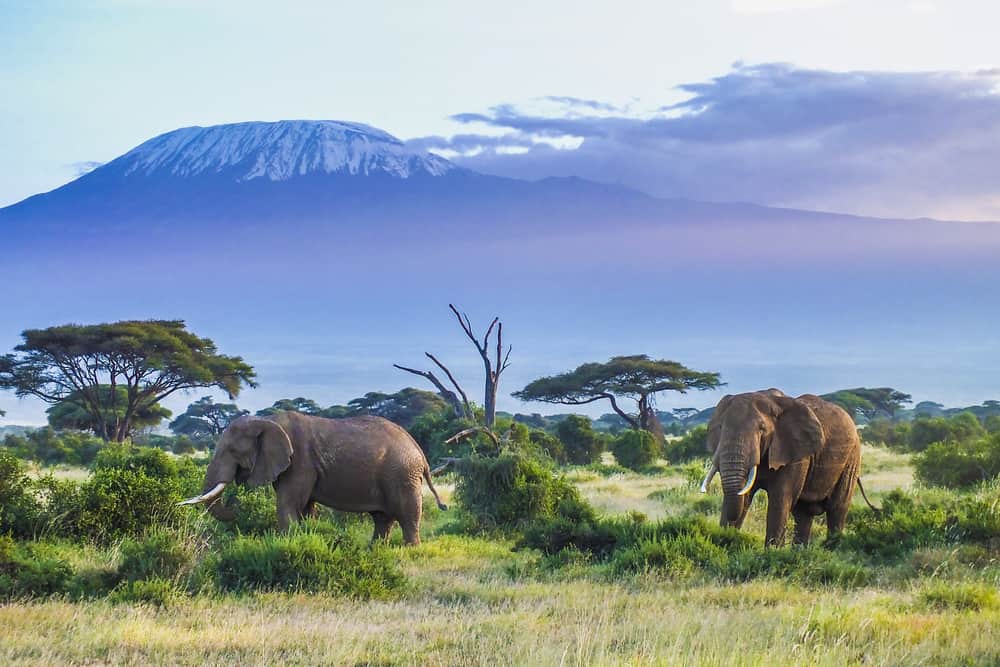
Mount Kilimanjaro is the highest mountain in Africa and one of the Seven Summits. It is 19,341 feet tall or 5,895 meters above sea level. If it were located in Europe, it would be the tallest peak in the continent.
However, unlike many of the peaks on this list, climbing Kilimanjaro does not require technical mountaineering skills or carrying heavy backpacks. Africa’s highest peak is a high altitude trek that is guided and fully supported by a local crew. Therefore, it can be climbed be people with no experience and average fitness.
Interested in climbing Kilimanjaro? See our trip dates and prices.



















































